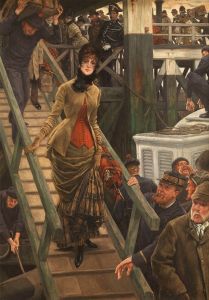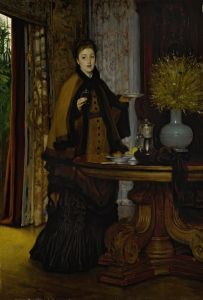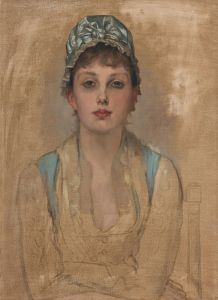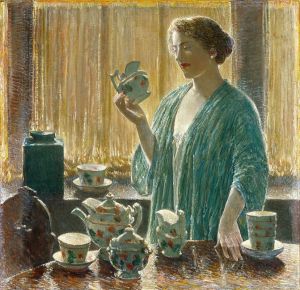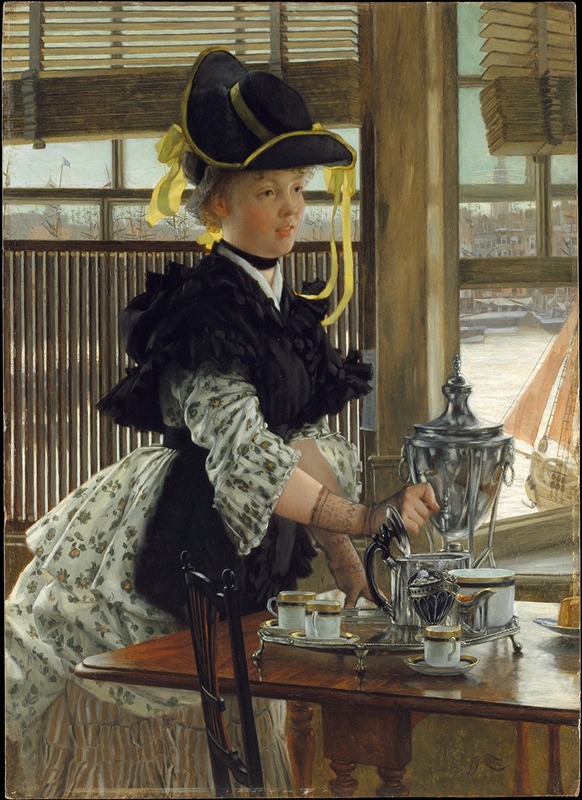
Tea
A hand-painted replica of James Tissot’s masterpiece Tea, meticulously crafted by professional artists to capture the true essence of the original. Each piece is created with museum-quality canvas and rare mineral pigments, carefully painted by experienced artists with delicate brushstrokes and rich, layered colors to perfectly recreate the texture of the original artwork. Unlike machine-printed reproductions, this hand-painted version brings the painting to life, infused with the artist’s emotions and skill in every stroke. Whether for personal collection or home decoration, it instantly elevates the artistic atmosphere of any space.
"Tea" is a painting by the French artist James Tissot, created in the late 19th century. James Tissot, born Jacques Joseph Tissot on October 15, 1836, in Nantes, France, was a prominent painter known for his detailed and fashionable depictions of contemporary life. He was particularly recognized for his ability to capture the nuances of social interactions and the elegance of the Victorian era.
The painting "Tea" exemplifies Tissot's keen interest in the social customs and domestic life of the upper-middle class during the Victorian period. This work is part of Tissot's broader exploration of themes related to leisure and the private lives of women, which he often depicted with a sense of intimacy and realism. Tissot's style is characterized by meticulous attention to detail, vibrant colors, and a strong sense of composition, all of which are evident in "Tea."
In "Tea," Tissot presents a scene that captures the essence of a social gathering centered around the ritual of tea drinking, a popular pastime in Victorian society. The painting typically features elegantly dressed women, often in a domestic setting, engaged in conversation and enjoying tea. Tissot's ability to render textures, such as the fabrics of the women's dresses and the intricate patterns of the china, adds a layer of richness to the scene. The setting often includes elements like plush furnishings and decorative objects, which further emphasize the opulence and comfort of the environment.
Tissot's work is notable for its narrative quality, and "Tea" is no exception. The painting invites viewers to consider the relationships and interactions between the figures, offering a glimpse into the social dynamics of the time. The expressions and gestures of the subjects are carefully crafted to convey a sense of realism and immediacy, drawing the viewer into the scene.
James Tissot's career was marked by his move to London in 1871, where he became associated with the Aesthetic Movement and gained considerable success. His works were well-received by the British public, and he became known for his portraits of fashionable society. Tissot's ability to capture the subtleties of social life and his technical skill made him a sought-after artist during his time.
"Tea" is representative of Tissot's broader body of work, which often focused on themes of modernity, fashion, and the complexities of social life. His paintings provide valuable insights into the cultural and social norms of the 19th century, making them important historical documents as well as works of art.
Today, James Tissot's paintings, including "Tea," are appreciated for their artistic merit and their ability to convey the spirit of an era. His works are held in various public and private collections, where they continue to be studied and admired for their contribution to the understanding of Victorian society and art.





